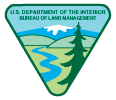 |
|||||
The Yuma clapper rail (Rallus longirostris yumanensis) is a federally endangered species and 90% of the U.S. population exists in only 2 wetlands. California Black Rails (Laterallus jamaicensis coturniculus) are state endangered in Arizona and state threatened in California. To ensure long-term persistence of these two species, we need to have effective management and mitigation activities that improve habitat quality and restore populations. One possible management activity that has been proposed to benefit both species is prescribed burning in areas with decadent emergent vegetation. Historically, marsh habitats along the Lower Colorado River were highly ephemeral with periodic flooding and natural fires eliminating decadent stands of emergent vegetation. Years of flood control and fire suppression has resulted in substantial areas of decadent emergent marsh h habitat, but very little early successional emergent marsh along the Lower Colorado River. Prescribed fire may be the best technique for creating early-successional emergent marsh habitat required to enhance populations of these 2 species. This project evaluates the usefulness of prescribed fire as a potential conservation measure for both Yuma Clapper Rails and California Black Rails in southern Arizona and southern California. Call-broadcast surveys before and after burning in both burned and unburned areas (2 adjacent to each burned area) will allow us to examine the effects of fire on rail abundance. We are working with a variety of federal and state cooperators to identify study plots that currently do not have populations of breeding rails, but are near existing breeding areas for both species and dominated by dense emergent vegetation. If rail populations respond positively to prescribed fires, the project will provide a proven method for restoring rail populations and rail habitat along the entire Lower Colorado River. The immediate goal of the proposed project is to provide a tested and proven technique for creating/restoring optimal habitat for both Yuma Clapper Rails and California Black Rails.








